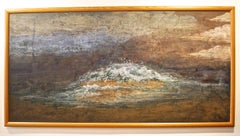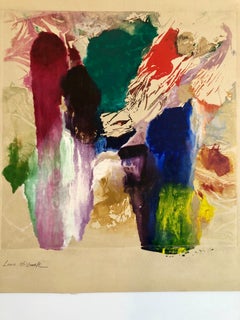Gouache Abstract Paintings
1930s Modern Gouache Abstract Paintings
Paper, Watercolor, Gouache
1940s Modern Gouache Abstract Paintings
Paper, Gouache
1940s Modern Gouache Abstract Paintings
Paper, Gouache
Mid-20th Century Modern Gouache Abstract Paintings
Gouache
1960s Modern Gouache Abstract Paintings
Ink, Gouache, Board
20th Century Modern Gouache Abstract Paintings
Paper, Gouache
20th Century Modern Gouache Abstract Paintings
Paper, Gouache
20th Century Modern Gouache Abstract Paintings
Paper, Gouache
20th Century Modern Gouache Abstract Paintings
Gouache, Paper
Mid-20th Century American Modern Gouache Abstract Paintings
Paper, Gouache
20th Century Modern Gouache Abstract Paintings
Gouache
1950s American Modern Gouache Abstract Paintings
Gouache, Archival Paper
1950s Modern Gouache Abstract Paintings
Paper, Oil, Gouache
2010s American Modern Gouache Abstract Paintings
Acrylic, Gouache, Board, Mixed Media
Mid-20th Century American Modern Gouache Abstract Paintings
Paper, Gouache
2010s Modern Gouache Abstract Paintings
Mixed Media, Acrylic, Gouache, Board
2010s Modern Gouache Abstract Paintings
Mixed Media, Acrylic, Gouache, Board
2010s American Modern Gouache Abstract Paintings
Mixed Media, Acrylic, Gouache, Board
2010s Modern Gouache Abstract Paintings
Mixed Media, Acrylic, Gouache, Board
2010s Modern Gouache Abstract Paintings
Acrylic, Gouache, Board, Mixed Media
2010s Modern Gouache Abstract Paintings
Gouache, Board, Mixed Media, Acrylic
2010s Modern Gouache Abstract Paintings
Mixed Media, Acrylic, Gouache, Board
2010s Modern Gouache Abstract Paintings
Gouache, Glass, Mixed Media, Acrylic
2010s Modern Gouache Abstract Paintings
Mixed Media, Acrylic, Gouache, Board
1980s Modern Gouache Abstract Paintings
Paper, Gouache
1980s Modern Gouache Abstract Paintings
Paper, Gouache
1970s Modern Gouache Abstract Paintings
Paper, Gouache
Mid-20th Century American Modern Gouache Abstract Paintings
Paper, Gouache, Oil Pastel
1930s Modern Gouache Abstract Paintings
Paper, Gouache
20th Century American Modern Gouache Abstract Paintings
Oil, Gouache, Archival Paper
1930s Modern Gouache Abstract Paintings
Canvas, Oil, Gouache
1960s Modern Gouache Abstract Paintings
Paper, Gouache
1960s Modern Gouache Abstract Paintings
Paper, Gouache
1960s Modern Gouache Abstract Paintings
Paper, Gouache
1960s Modern Gouache Abstract Paintings
Paper, Gouache
2010s Modern Gouache Abstract Paintings
Watercolor, Gouache, Paper
Mid-20th Century American Modern Gouache Abstract Paintings
Paper, Gouache
2010s Modern Gouache Abstract Paintings
Paper, Watercolor, Gouache
1960s American Modern Gouache Abstract Paintings
Gouache
Mid-20th Century American Modern Gouache Abstract Paintings
Oil Pastel, Paper, Gouache
1940s Modern Gouache Abstract Paintings
Canvas, Oil, Gouache
1980s American Modern Gouache Abstract Paintings
Gouache
1980s American Modern Gouache Abstract Paintings
Gouache
1980s American Modern Gouache Abstract Paintings
Gouache
1980s American Modern Gouache Abstract Paintings
Gouache
1990s American Modern Gouache Abstract Paintings
Gouache
1930s Modern Gouache Abstract Paintings
Gouache
1930s American Modern Gouache Abstract Paintings
Gouache
1950s American Modern Gouache Abstract Paintings
Gouache
2010s Modern Gouache Abstract Paintings
Oil Pastel, Oil, Acrylic, Watercolor, Gouache
1940s American Modern Gouache Abstract Paintings
Paper, Gouache
Early 20th Century Modern Gouache Abstract Paintings
Paper, Gouache
Mid-20th Century American Modern Gouache Abstract Paintings
Paper, Gouache
Mid-20th Century American Modern Gouache Abstract Paintings
Paper, Gouache, Oil Pastel
Mid-20th Century American Modern Gouache Abstract Paintings
Paper, Oil Pastel, Gouache
Mid-20th Century American Modern Gouache Abstract Paintings
Ink, Gouache, Board
Mid-20th Century Modern Gouache Abstract Paintings
Ink, Watercolor, Gouache
Mid-20th Century Modern Gouache Abstract Paintings
Ink, Watercolor, Gouache



